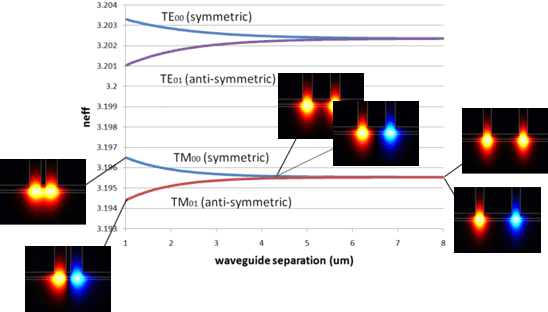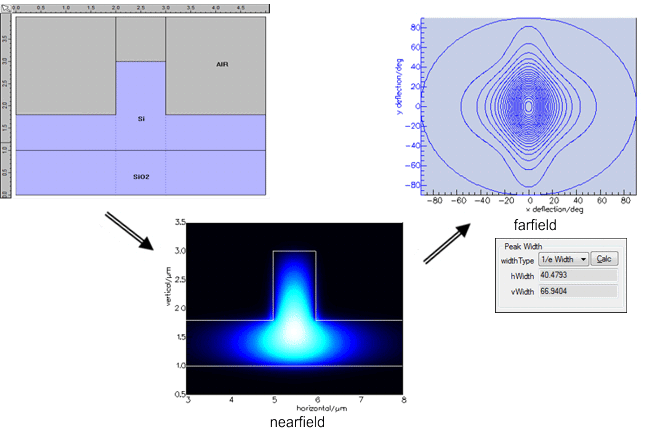FIMMWAVEA powerful waveguide mode solver |
    |
Design UtilitiesMaking the most of FIMMWAVEFIMMWAVE does not just find the eigenmodes of your waveguides, it also provides you with extensive tools to analyse your results and assess their accuracy. FIMMWAVE also comes with a waveguide scanner to optimise your structures, as well as an advanced far-field calculator. Mode AnalysisThe following data is available for each mode: - effective index and propagation constant, real and imaginary (absorption)
It is possible to plot the mode profile for any component of the electric and magnetic fields, the intensity or the Poynting vector. Cross-sections of the mode profiles can also be very easily obtained. Parameter ScannersThe parameter scanners allow to optimise your designs in a fast and simple way. These routines will allow you to rapidly generate design curves of almost any calculated value as a function of almost any input parameter or dimension. This can be useful to study the evolution of the effective index, absorption or confinement (among other results) of your modes with: - the dimensions of your structure
This makes it also possible to follow the evolution of the effective indices of your modes along a taper, which allows you to optimise the speed of your taper calculations in FIMMPROP.
Here we see the symmetric and anti-symmetric modes of a twin ridge waveguide becoming degenerate as the guides are moved apart. The scan was obtained in a few seconds. Far-field calculatorYou can calculate the farfield of any mode using Photon Design's Farfield Calculator. The Farfield Calculator uses a fully vectorial plane-wave expansion algorithm to compute the farfield profile, which can be plotted on a spherical and a planar projection, as well as in the reciprocal K-space (useful for periodic structures). You can plot the profile and calculate the FWHM, 1/e and 1/e2 widths of your farfield.
The Farfield Calculator includes an "aperture" feature which can compute how much
light is incident on a given area, effectively measuring how much light would be
received by a photodiode of finite size. You can even scan the position
of the aperture to simulate the effect of a far-field scan in the lab.
|





